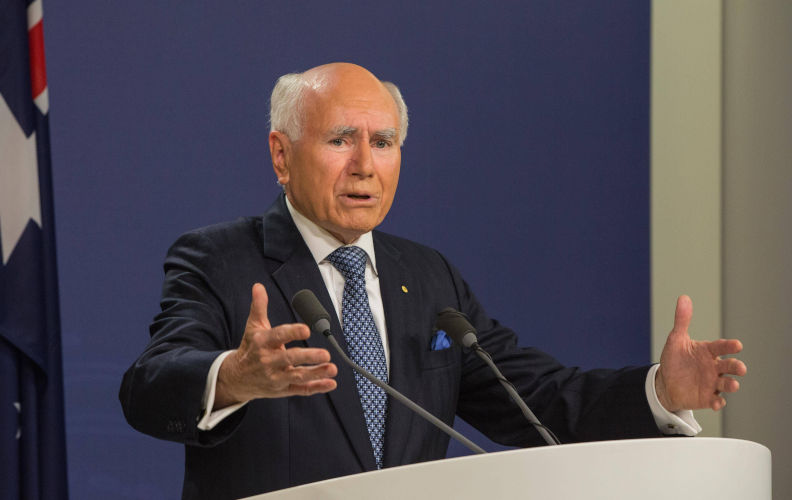The good, the bad and the stupid
September 7, 2025
When Sergio Leone made The Good, the Bad and the Ugly, he showed how flawed characters chasing the same prize could blunder their way into folly and missed opportunities.
Australian politics has offered its own version in the debate over migration: the good, the bad and, in the case of some conservative politicians and commentators, at times, the downright stupid.
The good came with John Howard. Whatever else is said about him, he was the last leader of either major party to make a clear, confident and public case for migration. In the late 1990s, when most permanent visas were still going to family reunion categories, Howard argued bluntly and persuasively that a nation leaving low-wage industries behind could not afford to neglect skills. He told the Australian public that the migration program had to pivot: fewer dependent relatives, more skilled workers to drive an economy moving into services, finance, technology and health. By the early 2000s, he had flipped the intake: two-thirds of visas went to skilled entrants.
That decision reshaped modern Australia. The Indian-born population surged from fewer than 100,000 in 2001 to nearly 300,000 in 2011, and by the 2021 Census had passed 780,000. The Chinese-born population followed a similar trajectory: about 142,000 in 1996, rising to 230,000 in 2001, more than 350,000 in 2011, and close to 550,000 by 2021. These two communities, now among the largest overseas-born groups in the country, overwhelmingly arrived after Howard’s reforms. They brought skills, qualifications and values Howard believed would strengthen not just the economy but also the Liberal Party: a commitment to education, thrift, family cohesion, small business ambition and suspicion of government waste.
Then came the bad. The next generation of Liberal leaders inherited this opportunity and one, in particular, promptly squandered it. Mainly Scott Morrison, who as prime minister, struck a clumsy note again and again. During the COVID Delta wave, he shut down the border to Australian citizens returning from India, even threatening them with jail if they tried to come home, a move that enraged one of the fastest-growing communities in the country because it was clear that rule did not apply to anyone who was planning to arrive from the US or Europe. For Chinese Australians, years of ham-fisted rhetoric around national security left many feeling collectively targeted rather than respectfully engaged. A community that could have been natural Coalition partners was instead treated with suspicion or, worse, as traitors.
The electoral consequences are written on the map. In Sydney, the seats of Bennelong, Reid, Parramatta and Greenway have moved decisively out of the Liberals’ reach. In Melbourne, the same is true of Aston, Menzies, Deakin, McEwen and Hawke. That is just some of the crucial battleground electorates, where the Liberal Party once had opportunities, but now faces steep odds because it alienated the very voters Howard helped bring here.
And now we come to the stupid. Instead of reckoning with these failures, today some within the conservative political diaspora are doubling down on anti-migrant rhetoric. They blame housing shortages, cost-of-living pressures and even social cohesion on arrivals, conveniently ignoring the fact that it was the Howard Government that opened the door to the Indian and Chinese professionals who now anchor so many suburbs in Sydney and Melbourne. It was under Abbott, Turnbull and Morrison that these voters kept arriving in large numbers. Labor did not conjure these communities into being; Coalition policy did.
What’s more, the timeline makes the current complaints absurd. A permanent resident typically needs four years before applying for citizenship, with at least one year as a permanent resident. Only then can they enrol to vote, meaning that the voters now showing up in Bennelong, Reid, Chisholm or Deakin are very often the product of decisions made by Liberal Governments between 2000 and 2019. To complain about their presence is to complain about the results of your own policy.
Look at the country that exists today. More than half of Australians are now first- or second-generation migrants. Our own RedBridge analysis shows that in the 50 electorates with the highest proportions of first- and second-generation Australians, the overwhelming majority are Labor-held. Seats that were once safe Coalition seats or genuine contests are now fortified against the Liberals. This is the mountain Liberal MPs have built for themselves.
Howard’s pivot was not flawless, but it was grounded in reality and foresight. He knew that a country with fewer factories and more universities, fewer unskilled labour demand and more tech hubs, would need a migration program to match. He also knew that the values of the new arrivals were not hostile to his party’s project, but potentially its lifeblood. The tragedy for the Liberal Party and the stupidity is that his successors have turned what should have been a generational strength into a self-inflicted generational weakness.
The views expressed in this article may or may not reflect those of Pearls and Irritations.
